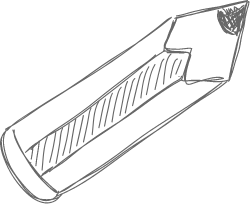- We failed to achieve the objective of a R&D project. Can we still file for SR&ED?
- Will this year’s SR&ED claim affect the monies and tax credits already received from previous claims?
- How much time do I have to file for SR&ED? Can I amend an existing tax filing?
- Can we still claim for SR&ED if we already receive IRAP?
- Will my business receive a tax audit if I apply for SR&ED?
- Can we claim both SR&ED and OIDMTC?
We failed to achieve the objective of a R&D project. Can we still file for SR&ED?
Yes. The success of a business project is unrelated to its eligibility for SR&ED. SR&ED claims are often subsets of business projects. SR&ED can be claimed as long as technological uncertainty, technological advancement, and systematic investigation can be shown, regardless of whether or not the business objectives were met.
Will this year’s SR&ED claim affect the monies and tax credits already received from previous claims?
No. Unless the CRA paid out the incorrect amount due to a clerical error, previously assessed claims will not be reassessed.
How much time do I have to file for SR&ED? Can I amend an existing tax filing?
You have 18 months from the end of your fiscal year to file for SR&ED. You can amend an existing tax filing any time prior to the end of the 18-month period.
Can we still claim for SR&ED if we already receive IRAP?
Claiming IRAP does not preclude your company from benefiting from the SR&ED program. Generally speaking, IRAP payments will be deducted from SR&ED returns.
Will my business receive a tax audit if I apply for SR&ED?
The reviews for the SR&ED program are separate from those of the CRA audits. The objective of the CRA tax auditor is to recover tax dollars from taxpayers. The objective of the SR&ED program differs from this, in that its purpose is to encourage technical innovation in Canada.
Can we claim both SR&ED and OIDMTC?
If your business is engaged in developing an Interactive Digital Media product, chances are you are partaking in R&D activities. Businesses can claim both SR&ED and OIDMTC tax credits on a project, as long as you are not claiming any costs twice. Costs claimed for SR&ED must be separate from costs claimed for OIDMTC.






